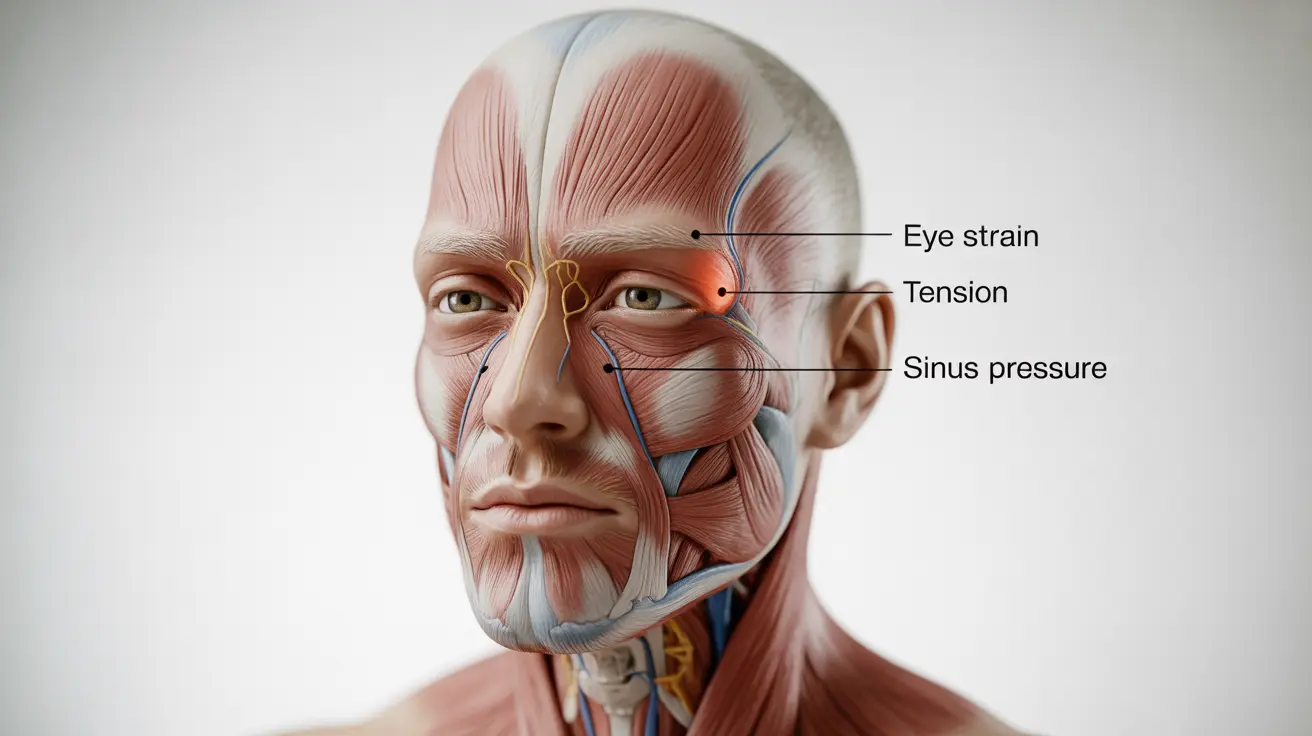Experiencing a headache behind the eyes can be both uncomfortable and concerning. This specific type of head pain can significantly impact daily activities and may stem from various underlying causes. Understanding the nature of these headaches is crucial for finding effective relief and determining when medical attention might be necessary.
While headaches behind the eyes are common, they can vary greatly in intensity, duration, and underlying causes. From simple eye strain to more complex conditions like migraines or sinus infections, identifying the root cause is key to proper treatment.
Common Causes of Headaches Behind Eyes
Several factors can trigger headaches that manifest behind the eyes:
Eye Strain and Digital Eye Fatigue
Extended screen time, poor lighting conditions, or uncorrected vision problems can lead to eye strain, resulting in headaches behind the eyes. This is increasingly common in our digital age, where many spend hours looking at screens.
Sinus-Related Issues
Inflammation or infection of the sinuses can create pressure and pain behind the eyes. This is often accompanied by other symptoms such as nasal congestion, facial tenderness, and post-nasal drip.
Tension Headaches
Stress, poor posture, and muscle tension in the neck and shoulders can trigger tension headaches that manifest as pressure behind the eyes. These are typically characterized by a band-like tightness around the head.
Different Types of Headaches and Their Characteristics
Migraine Headaches
Migraines often cause severe, throbbing pain that can affect one or both sides of the head and commonly involve the area behind the eyes. They may be accompanied by:
- Sensitivity to light and sound
- Nausea or vomiting
- Visual disturbances (aura)
- Dizziness
Cluster Headaches
These intense headaches typically occur on one side of the head and behind one eye. They're characterized by:
- Severe, burning pain
- Eye redness and tearing
- Nasal congestion on the affected side
- Regular timing of attacks
Treatment and Prevention Strategies
Medical Treatments
Depending on the underlying cause, treatment options may include:
- Over-the-counter pain relievers
- Prescription medications for specific conditions
- Antihistamines or decongestants for sinus-related headaches
- Preventive medications for chronic conditions
Lifestyle Modifications
Several lifestyle changes can help prevent or reduce headache frequency:
- Regular exercise and stress management
- Proper hydration
- Maintaining good posture
- Following a consistent sleep schedule
- Taking regular breaks from screen time
Digital Eye Strain Prevention
To minimize eye strain-related headaches:
- Follow the 20-20-20 rule: Every 20 minutes, look at something 20 feet away for 20 seconds
- Ensure proper screen positioning and lighting
- Use blue light filters when necessary
- Maintain regular eye examinations
Frequently Asked Questions
What are the common causes of a headache behind the eyes, and how can they be treated?
Common causes include eye strain, sinus infections, tension headaches, migraines, and cluster headaches. Treatment varies based on the cause but may include pain relievers, lifestyle changes, stress management, and specific medications for underlying conditions.
What is the difference between a tension headache, a cluster headache, and a migraine headache in terms of symptoms and treatment?
Tension headaches typically cause dull, band-like pressure; cluster headaches produce intense pain on one side with eye symptoms; and migraines cause throbbing pain with sensitivity to light and sound. Each type requires different treatment approaches, from simple pain relievers for tension headaches to specialized medications for migraines and cluster headaches.
Can eyestrain from computer use cause headaches behind the eyes, and what are some prevention strategies?
Yes, digital eye strain commonly causes headaches behind the eyes. Prevention strategies include taking regular breaks, maintaining proper screen distance, using appropriate lighting, and following the 20-20-20 rule.
How can sinus infections lead to headaches behind the eyes, and what is the best course of treatment for sinus-related headaches?
Sinus infections cause inflammation and pressure in the sinus cavities, leading to pain behind the eyes. Treatment typically includes decongestants, antihistamines, nasal corticosteroids, and in some cases, antibiotics if the infection is bacterial.
What lifestyle changes can help prevent or reduce the frequency of headaches behind the eyes?
Key lifestyle changes include maintaining good sleep habits, staying hydrated, managing stress, practicing good posture, taking regular breaks from screen time, and getting regular exercise. Additionally, identifying and avoiding personal triggers can help reduce headache frequency.




